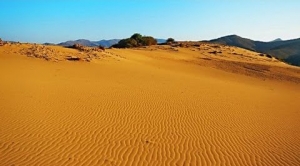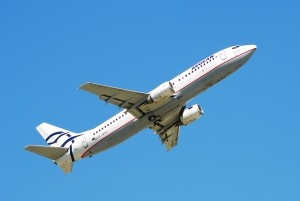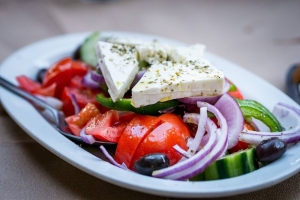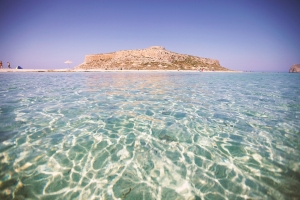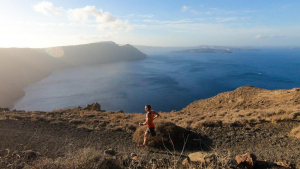BUSINESS CENTRE
XpatAthens
Greeks Who Have Left Their Mark On 2015
Lemnos - Home To Greece’s Unique Desert
To read this article in full, please visit: Greek Reporter
How Skateboarding Is Helping Young Refugees In Athens
TripAdvisor Names AEGEAN Best Regional Airline In Europe For 2018
Please click HERE to view TripAdvisor's Top 10 Airlines in the World for 2018.
Bacteria Strain Could Help Make Feta Cheese A 'Functional Food'
Wanderlust Greece - The Love-List Of Crete
Article source: Greek Reporter
International Distinction For Santorini Experience
Stefanos Tsitsipas Advances To The 3rd Round Of The French Open
Talented Greek tennis star, Stefanos Tsitsipas is on his way to the 3rd round at Roland Garros for the first time. Tsitsipas won against Bolivian Hugo Dellien, in a 4-6, 6-0, 6-3, 7-5 match that lasted over two hours and 49 minutes.
Tsitsipas admitted, "I started thinking what went wrong in the first set. That [bathroom] break helped me. So I went inside mentally prepared to fight more, and I was aware of the situation I was at. Once I got myself into the right mindset, things seemed to flow my way. And from there, winning the [second] set 6-0 was good confidence boost for me. Obviously, after that, he didn't want to give up. He fought as much as he could. But I seemed to prevail at the end."
In the next round, the Greek tennis player is scheduled to face Filip Krajinovic of Serbia and everyone in Greece will be cheering him on!
To read more, please visit: ATP Tour
Photo Credit: @StefTsitsipas
Moving Toward A Smoke-Free Greece
During the presentation, the prime minister stated: "The smoking ban is a bold initiative to protect public health. A symbolic move to modernise and refine our daily lives. But it is also an exercise in mutual respect that ultimately strengthens social cohesion."
The Greek administration sympathizes with the 84% of citizens who consider the failure to implement anti-smoking laws a "cultural degradation" and the 76% who declare themselves outraged.
"We are responding to this displeasure with a national strategy and a strict ban on smoking in public spaces, in private work areas, in spaces where there are children, in cars where children are passengers...but also with a good and extremely inventive information and awareness campaign. Our aim is not to divide but an alliance for health. To highlight the individual responsibility that will lead to collective harmony." he said.
Health Unites us: Alliance For A Better Life Without Smoking
The anti-smoking campaign, whose central message is "Health unites us: Alliance for a better life without smoking" marks the start of a nationwide effort, which is also back by strict fines.
The campaign focuses on 4 lines of action
- Creating a non-smoking culture that emphasizes on prevention.
- Respect for non-smokers.
- Care for smokers by increasing medical support for stopping smoking.
- Evaluating new tobacco products and regulating their circulation on the market.
To read more about the anti-smoking campaign, please visit: AMNA
Microsoft To Build Data Centers In Greece As Part Of "GR For GRowth" Initiative
The initiative was announcer by Microsoft President Brad Smith at the Acropolis Museum in the presence of the Greek Prime Minister, Kyriakos Mitsotakis, and the General Manager of Microsoft Greece, Cyprus, and Malta, Theodosis Michalopoulos.
"Today's commitment to the people and businesses of Greece will position the country among the digital leaders of Europe. A Microsoft data center region provides a competitive advantage to our digital economy. At the same time, it is a long-term investment and a vote of confidence in our country's potential. The cloud is transforming every industry and sector. The investment in skilling 100,000 citizens will empower Today and tomorrow's Greek workforce," said Prime Minister of Greece, Kyriakos Mitsotakis.



